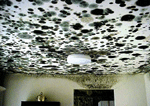Agriculture and Emergency Management agencies in Missouri will assist with outreach, education and implementation of the Clean Air Act's Risk Management Program.
The study says 9 percent of childhood asthma cases in Long Beach and 6 percent in Riverside were attributable to traffic proximity.
The data cover information from 2004 through 2008 on EPA and state enforcement program performance for the Clean Air Act and Resource Conservation and Recovery Act requirements.
Midwestern utility purchases low NOx burners and over-fire air system to comply with Regional Haze Rule.
Data will help direct efforts to protect public health from harmful emissions in 10 states along the 2,000-mile border.
Western Washington University study finds that tree leaves on busy diesel bus routes were more magnetic than those from rural areas.
EPA report shows that a cap and trade partnership established in 2003 has reduced smog-forming emissions of nitrogen oxides.
The agency says the $50 million program last year enabled retrofits and purchases for 14,000 diesel-powered vehicles and pieces of equipment.

Mold, lead-based paint and other exclusions in general liability have tipped the balance for commercial and habitational property owners. What's a property owner to do?

These communities must develop plans for reducing pollution by 2012 and demonstrate that they are meeting standards by fall of 2014.
The system can help ports reduce up to 99 percent of air pollutants emitted by ships.
The agency is sampling the air outside 63 schools in 22 states to evaluate whether long-term exposure to toxics in the outdoor air might pose health concerns to children.
The National Institute of Public Health study followed 500 households and found that families that used the Patsai stove experienced better lung function than those that did not.
Imported from China, the blenders use uncertified small off-road engines that can produce excess smog-forming emissions.